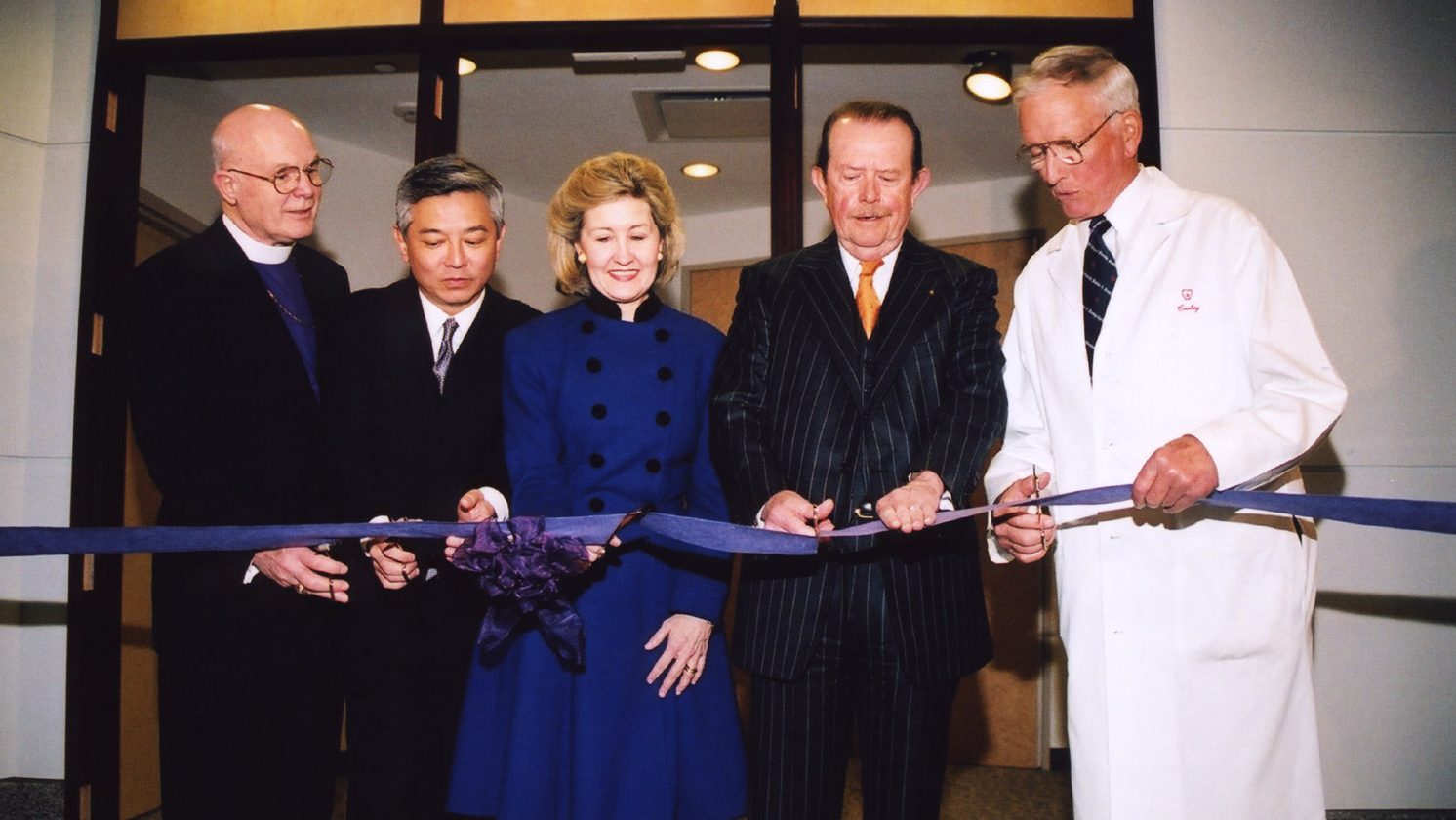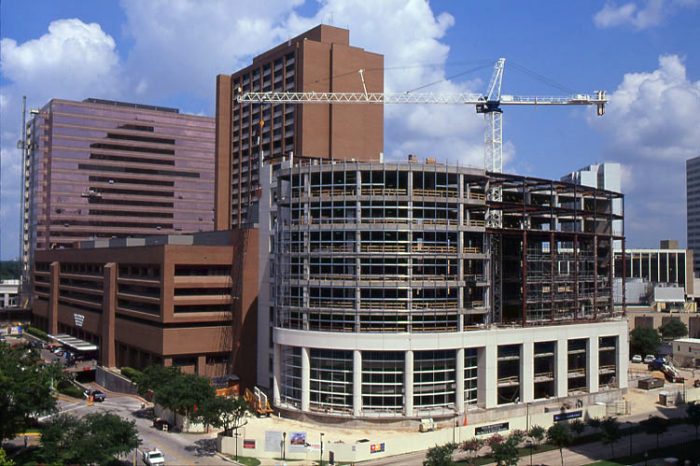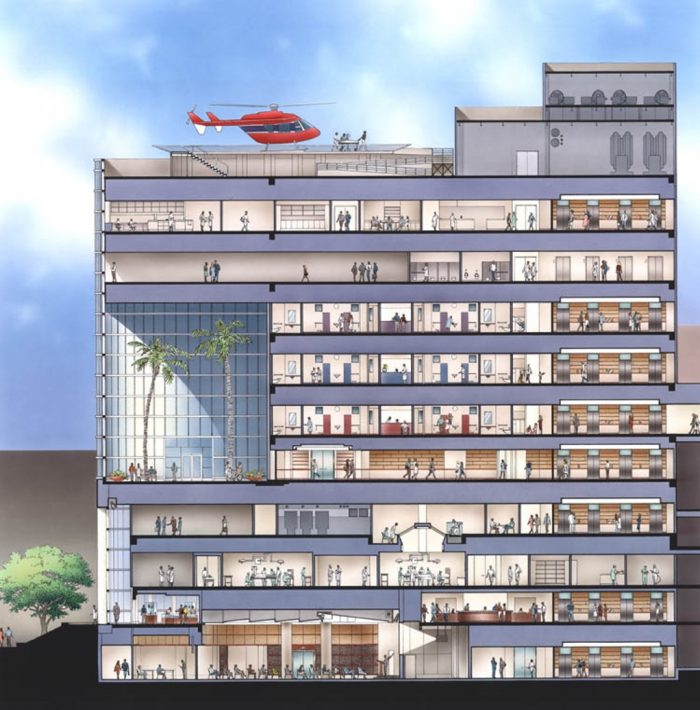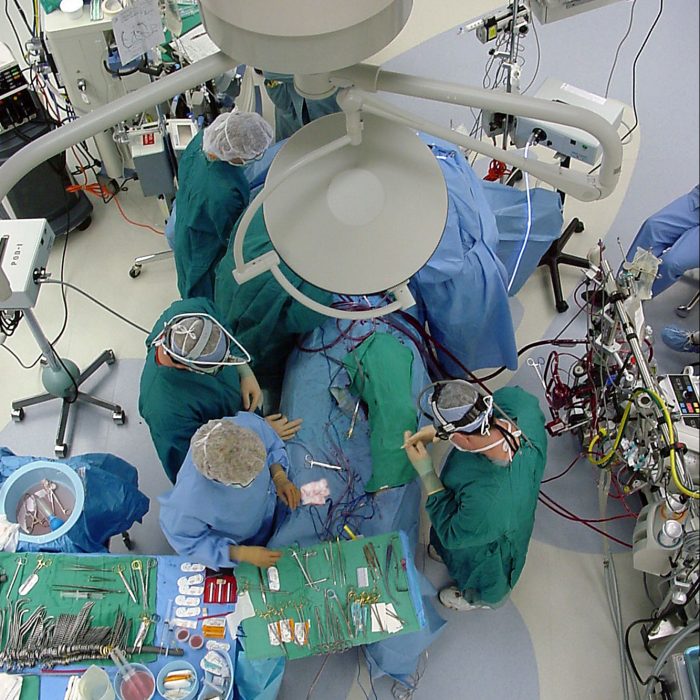Did You Know? The Denton A. Cooley Building Was Dedicated 20 Years Ago

The Denton A. Cooley Building was Dedicated in 2002. Dignitaries cutting the ribbon are: The Right Reverend Claude E. Payne, D.D., Chairman of the Board, St.Luke’s Episcopal Health System and St. Luke’s Episcopal Hospital, Michael Jhin, President and CEO, St. Luke’s Episcopal Health System, U.S. Senator Kay Bailey Hutchison, Meredith Long, Chairman, Texas Heart Institute Board of Trustees, and Denton A. Cooley, M.D., Founder, President and Surgeon in Chief,Texas Heart Institute, and Chief of Cardiovascular Surgery, St. Luke’s
At St. Paul’s Cathedral in London, an inscription commemorating Sir Christopher Wren, the building’s architect, reads, “If you seek his monument, look around you.” The same might be said of Dr. Cooley and the building that bears his name. Dedicated with a ribbon-cutting ceremony in January 2002, the Denton A. Cooley Building merged world-class patient care, education, and research within one state-of-the-art facility.

Construction started in July 1999, and the building was fully operational in March 2002. This shows the construction in May of 2000.
The 10-story, 327,000-square-foot Cooley Building cost $85 million and took 2 years to build. The lower level houses the Cooley Auditorium (once the largest auditorium in the TMC) and advanced telemedicine facilities for transmitting educational content to medical professionals worldwide. On the first floor are a spacious lobby and the Wallace D. Wilson Museum. The second floor contains 12 extra-spacious operating rooms, several of which have observation domes accessible from the third floor above. The third floor also houses offices for the cardiothoracic surgery service and electrical and mechanical facilities, high above any flooding threat.
Omitting a fourth floor facilitated the alignment of levels between the new building and the existing hospital. Floor 5 hosts THI administration, the library and visual communications services, and a 4-story window-walled atrium intended as a quiet, relaxing respite for patients, visitors, and staff. Floors 6 through 8 are patient care areas that include the cardiac intensive care unit, transplant unit, progressive care unit, and patient rooms. The patient rooms were designed with input from nursing staff to ensure patient comfort and optimum efficiency. Features include lowered windows that offered a better view from the bed, soft colors and fabrics, indirect lighting, and plenty of visitor seating; the patient chairs were designed specifically for the facility. The top two floors house basic research laboratories. On the roof, a helipad serves St. Luke’s and other nearby hospitals.

Illustration shows the building layout in cross-section.
The building was designed not only to be beautiful and functional, but also to align with the highest infection control standards. This included mold- and moisture-free construction and optimum indoor air quality—features we can appreciate all the more in these days of COVID-19.

When the Cooley Building opened in 2002, its spacious operating rooms were 60% larger than a typical operating room. Domes above some of the operating rooms provide for real-time observation and close-up views.
More than 500 well-wishers attended the building’s public opening, including many former patients. Speaking to the crowd, Dr. Cooley quipped with characteristic humor, “It is most gratifying to have this new building named in my honor—and a relief that it was not named in my memory.” Michael Jhin, then President and CEO of St. Luke’s Episcopal Health System, called it a place where “high tech meets high touch,” where advanced technology in cardiac care combine with personal touches to create a healing environment that helps patients feel at home—truly, world-class care with a heart.
The Cooley Building opened for business some 40 years after THI was founded. At the time, THI had been credited with more than 100,000 open-heart surgeries (more than anywhere else in the world), 210,000 cardiac catheterizations, 30,000 interventional procedures, and 800 transplants. The Cooley Building was not only a fitting testimony to these accomplishments, but also a forward-looking initiative that laid a solid foundation for future innovation in cardiovascular care.




